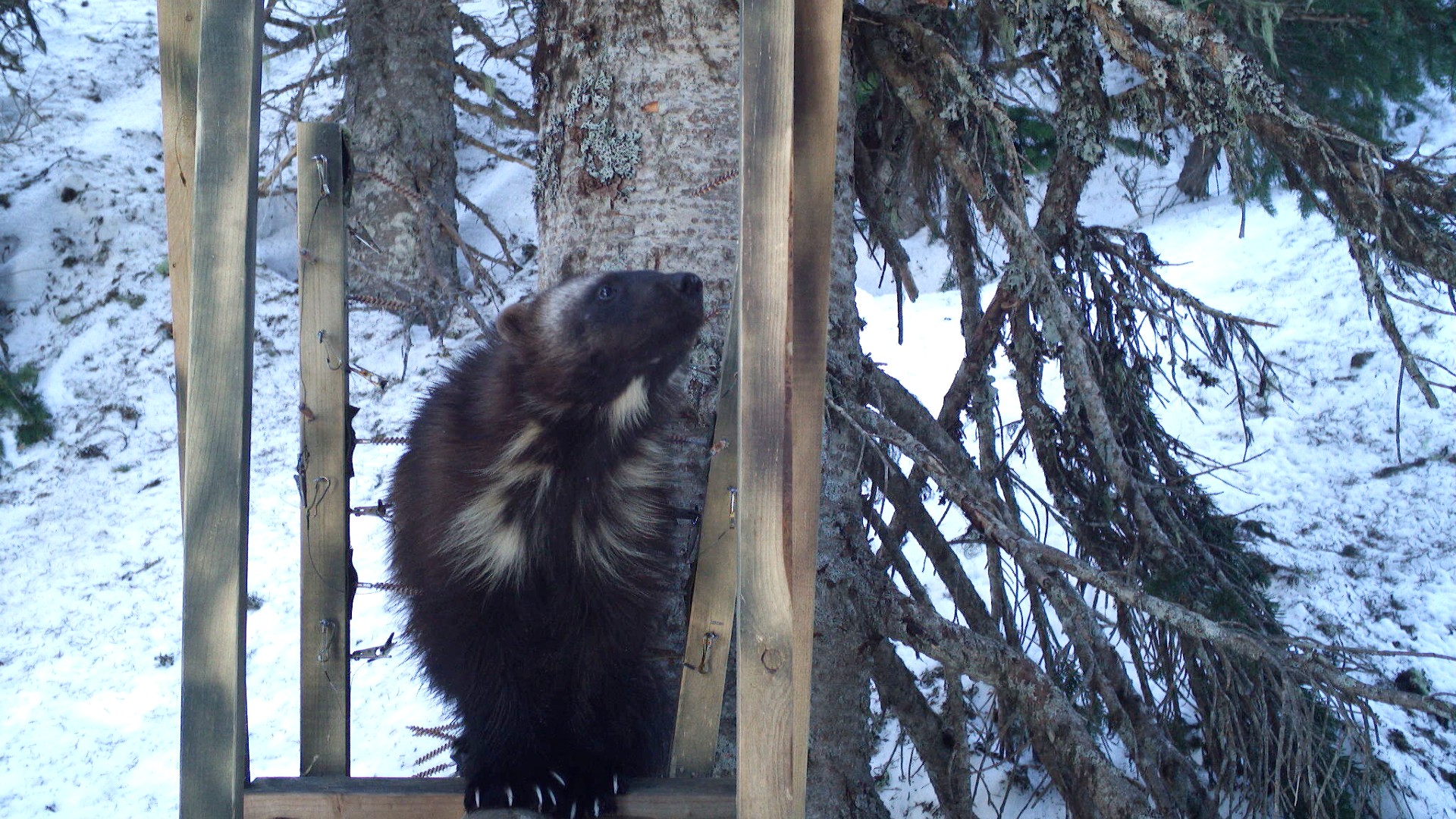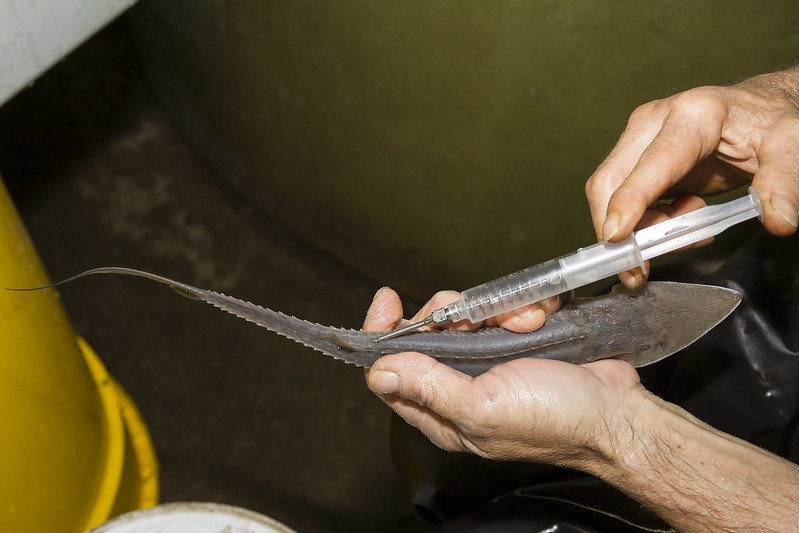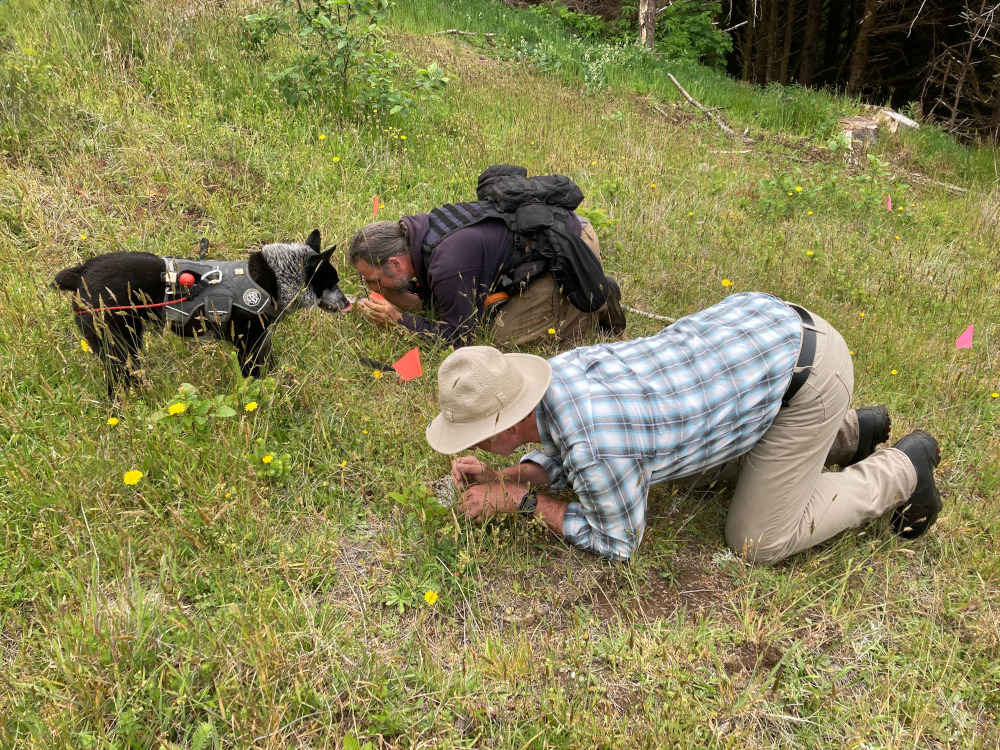Each fall thousands of pronghorns migrate 150 miles between their summer grounds in Grand Teton National Park and their winter habitat in Wyoming’s Green River Valley. It’s a journey complicated by fences, roads and other development. Conserving this antelope-like species means identifying these threats — not an easy task for such a wide-ranging mammal.
But after outfitting the animals with GPS tracking collars, researchers were able to identify the pronghorns’ routes and areas of potential problems. It turned out that a critical piece of their pathway was slated for development, which would have made their journey even more difficult and dangerous.
The tracking data helped rally conservation support to cancel the development and led to the establishment of the country’s first protected wildlife corridor.
Roaming ungulates aren’t the only beneficiaries of the technology. Since the mid-1990s, GPS collars — and now smaller GPS satellite tags — have been used to map the journeys of migrating birds, well-traveled sea turtles and countless other animals.
But when it comes to boosting conservation work, it’s not the only tool in the toolbox. A bevy of new and evolving technologies and techniques are helping researchers better study animals that are few in number, far-ranging or hard to find. And that can lead to more protections for imperiled wildlife and the habitat they need to survive. The research comes at a critical time as we face accelerating extinction rates across the world.
Here are some tools helping to gather information and inform policy:
1. Smile, You’re on Camera
Wolverines are so elusive that for decades scientists didn’t know much about them. That’s changing now with help from new technologies, including motion-triggered remote cameras, relatively cheap and noninvasive devices also known as “camera traps.”
“Camera traps have completely revolutionized how we study wolverines because they’re [our] eyes out in the landscape over huge areas,” says Jason Fisher, a wildlife ecologist at the University of Victoria. “Instead of putting a collar on a small handful of wolverines, you can now monitor an entire population — and you can do that continuously for as long as you want to.”
Camera traps can be paired with passive infrared sensors, which trigger the cameras when they detect an animal’s body heat.
And if positioned correctly, the photos can help identify individual animals that have distinctive markings.
Wolverines, like American martens and Asian black bears, often have unique fur patterns on their chests or throats that aren’t visible when they’re walking on all fours, so scientists sometimes suspend bait in front of camera traps to encourage animals to stand and expose those unique ventral markings.

Tigers and jaguars often need cameras on both sides to capture distinctive flank markings. Others, like bottlenose dolphins or African lions, are identified best through facial markings.
Camera traps can also help even when they don’t get images of the animals being studied.
“We put them in places where we think wolverines are and where we think wolverines aren’t because getting those absences are just important,” says Fisher. “If we think they should be using a piece of landscape, but they’re not, we need to know that so we can figure out why — is it human pressure from recreation or landscape development or climate change?”
2. Listen Up
Researchers don’t always need to see an animal to know it’s there. Acoustic recorders can help capture birdsong and can be combined with automated species identification programs like Cornell University’s BirdNET to assess bird populations.
Much like camera traps, these systems allow recordings to be collected 24 hours a day and without any noticeable human intrusion.
“These low-cost and automated tools may greatly improve efforts to survey bird communities and their ecosystems, and consequently, efforts to conserve threatened indigenous biodiversity,” researchers from the California Department of Fish and Wildlife wrote in a 2021 study.
Surveys and song meter recordings conducted at Mt Haupu, Kauai, by @NTBG and Archipelago Research and Conservation found new evidence of an endangered seabird ‘A’o (Newell’s Shearwater) colony adding to the importance of this unique site! pic.twitter.com/v01GiluYfK
— Nina Rønsted (@NinaRonsted) February 4, 2022
In Australia researchers enlisted the help of landowners to attach recorders to trees on their property. But the scientists were interested in capturing koala bellows, and not birdsong, to determine which areas had the most suitable koala habitat in private forests, where survey work is often limited. The research may help the species, which Australia declared endangered in February due to habitat loss, disease and other threats.
3. Tag, You’re It
Passive Integrated Transponder (PIT) tags have been around for decades, but they’re still incredibly useful to researchers — especially those who track fish that are often out of sight.
The devices, which don’t require batteries, function like microchips used to identify pets. A tiny radio transponder with a unique code is housed in a glass cylinder, then affixed or injected into an animal.

They’ve helped scientists understand the life cycles, predation, habitat and movement of not just fish but creatures like snakes and turtles. And because some PIT tags can be as small as a grain of rice, they’ve also been used to keep track of freshwater mussels, which are among North America’s most imperiled species.
“We take a microchip and we glue it on the shell of the mussel and we have a [transponder] wand that can go underwater and we can find that mussel without having to dig for it,” says Matt Ashton, an aquatic biologist at Maryland’s Department of Natural Resources who was involved in research assessing an effort to restart populations of eastern elliptio mussels in Maryland’s Patapsco River.
4. Snagged
If you want to study a grizzly bear, it might be easier — and less invasive — to just snag a piece of its fur than capture the whole animal. So-called “hair traps” or “hair snares” can take different forms, but often involve using a scent to lure the animal to barbed wire that will harmlessly grab a tuft of fur, but not restrain the animal. Researchers then use the DNA in the hair follicle to get biological information.
Since the 1990s the practice has grown in popularity and has been used for a wide variety of animals, especially elusive carnivores — including wolverines.
“DNA from hair samples has gone a long way to helping us understand how wolverines use landscapes and for documenting population size, because you can identify those right down individuals,” says Fisher.
5. DNA at Large
In more recent years, collecting DNA from animals has evolved. Scientists can now collect genetic material shed from plants and animals in the water, soil or air — known as environmental DNA or eDNA.
Although the technology still has much room for improvement, it’s already proving useful in aquatic ecosystems, where it’s been used to look for the presence of invasive carp. It’s also being used to assess whether threatened or endangered species are in an ecosystem.
Recently researchers in Brazil using eDNA detected the presence of a frog, Megaelosia bocainensis, not seen since 1968.
“For conservation it’s really helpful, because by using environmental DNA you don’t need to directly see the species and it’s not an invasive process — you don’t need to manipulate the animal and you don’t need to disturb the environment — and it’s cheap,” Carla Martins Lopes, a scientist involved in the Brazil discovery, told Mongabay.
There have also been recent breakthroughs with airborne DNA. Two recent studies showed that researchers could detect and identify dozens of species in a zoo through eDNA collected from the air.
And the work is spilling over to plants, too. In another effort, scientists analyzed eDNA from dust traps which collect pollen and other airborne molecules. “The team found several species of grass, fungi, and even an invasive species called tree of heaven (Ailanthus altissima) that had all been overlooked by more conventional surveys,” The Scientist reported.
6. Going Global
The more tools researchers have to collect information, the more data they have. Generating more data is good, but being able to share, access and analyze data from other researchers all over the world is even better.
A new study looked at a global data set with information from 8,671 camera traps on four continents and found that there was more mammal diversity in protected areas than other wilderness areas that lacked protections.
It’s the kind of research that could help drive big policy decisions.
“Under the Convention on Biological Diversity, the world is currently discussing new targets for how much of the earth’s surface should be covered by parks,” Cole Burton, a conservation biologist and study coauthor told Science Daily. “We need to have better information to inform these policy discussions. Hopefully this study helps fill the gaps in our knowledge.”
More tools are also being developed to help on this front, too.
One is Movebank, a free online database hosted by the Max Planck Institute of Animal Behavior, which lets researchers upload animal tracking data that can be shared or privately held. It gets about 3 million new data points each day.
There’s also a corresponding app, Animal Tracker, which allows researchers to connect with citizen scientists who can help with tracking, including locating a tagged animal that’s gone down.
7. Nose for Conservation

Not every conservation tool these days is high tech — sometimes you just need a really good nose.
Specially trained conservation detection dogs sniff out information that will protect endangered species and aid scientific research.
For Eba, that’s putting her nose to work on the Salish Sea, helping researchers find scat from endangered Southern Resident killer whales, which can reveal a lot about the orca’s health and habits.
For Filson, trained by Rogue Detection Teams, that’s helping to find endangered Franklin’s bumblebees or Sierra Nevada red foxes.
“I think we can all agree that dogs can find the scat of myriad species in the wild,” Jennifer Hartman, Filson’s handler and a field scientist from Rogue Detection Teams, told The Revelator. “But when you start to think about caterpillars, or viruses on plants, or invasive species at different stages in their life cycle, that’s when you really start to see the power of the nose at work.”
Of course no single tool — be it high- or low-tech — can save an endangered species by itself, but the more information we have the more we can protect. And with each technological development, the conservation picture from that information — and the processes to understand it — gets a little bit sharper.
![]()
A Nose for Science: Conservation Dogs May Help in Search for Endangered Franklin’s Bumblebee
"exciting" - Google News
February 16, 2022 at 08:02PM
https://ift.tt/dgE6ikD
7 Exciting Ways Researchers Study Elusive and Endangered Wildlife • The Revelator - The Revelator
"exciting" - Google News
https://ift.tt/Kfeju1a
Shoes Man Tutorial
Pos News Update
Meme Update
Korean Entertainment News
Japan News Update
Bagikan Berita Ini















0 Response to "7 Exciting Ways Researchers Study Elusive and Endangered Wildlife • The Revelator - The Revelator"
Post a Comment